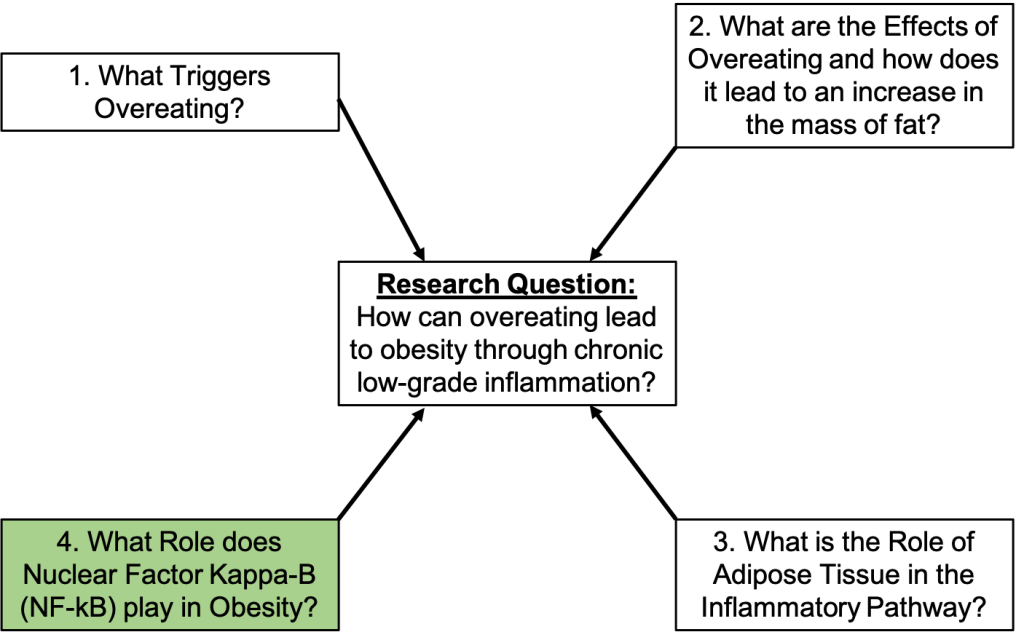Pathway
The question we are attempting to answer is “How does overeating lead to obesity through chronic low-grade inflammation?” Therefore, for the pathway, we decided to break down the question and explore its pathway section by section and slowly build on important points identified and determined from previous pathways.
There are four components to the question that can be explained with four separate pathways. The first pathway explores what triggers overeating. The second pathway explores the effect of overeating and how it can lead to adipogenesis and consequently an increase in the mass of fat. The third pathway explores the role of adipose tissue in the inflammatory response pathway. These three pathways are crucial for context; however, they are not the main pathway that we are focusing on. Hence, a brief explanation of these pathway are provided. The fourth pathway, which explores the role of Nuclear Factor Kappa-B in obesity, is the primary pathway of our investigation and is described in much more detail.

It is important to note that there is a complex network of pathways within the body that can lead to obesity. Therefore, it is difficult to map out the entire process as there are multiple pathways that not only share the same mediators and intermediates, but achieve the same outcome. The pathways selected within the following pages are just a few of the many that are involved with how overeating leads to obesity through low grade chronic inflammation.
Recent Comments